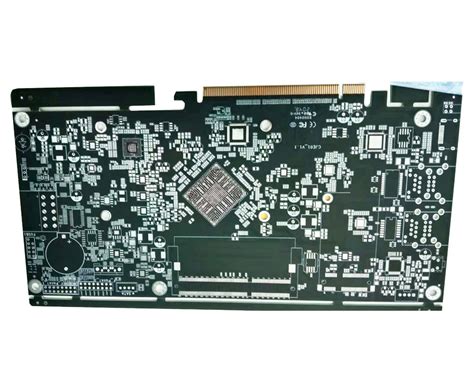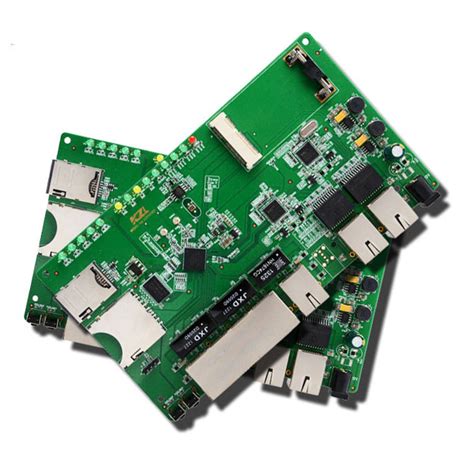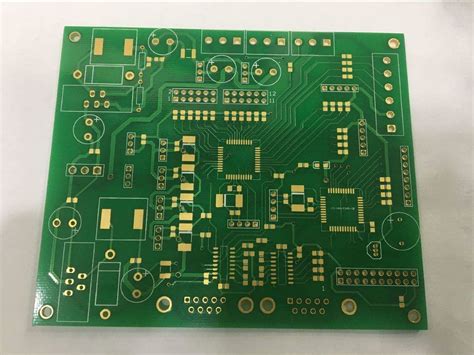Fast PCB Prototyping Service: A Comprehensive Guide
Introduction
In the fast-paced world of electronics development, time is of the essence. Fast PCB prototyping services have become an essential resource for engineers and designers who need to quickly bring their ideas to life. These services enable rapid turnaround times for the design, fabrication, and assembly of printed circuit boards (PCBs), allowing for swift iteration and testing of new concepts. This article provides a comprehensive guide to fast PCB prototyping services, covering various aspects such as the benefits, key considerations, materials, technologies, and how to choose the right service provider. By understanding these elements, engineers and designers can make informed decisions and accelerate their product development cycles.
1. Benefits of Fast PCB Prototyping Services
1.1 Accelerated Development Cycles
Fast PCB prototyping services significantly reduce the time required to move from concept to prototype. This acceleration allows for quicker validation of designs, faster identification of issues, and more rapid iteration, ultimately shortening the overall product development cycle.
1.2 Cost Efficiency
By enabling rapid prototyping, these services help reduce development costs. Early detection of design flaws and the ability to test multiple iterations quickly can prevent costly mistakes and redesigns later in the development process.
1.3 Enhanced Flexibility
Fast prototyping services offer flexibility in terms of design changes and modifications. Engineers can quickly test different design approaches and make adjustments without significant delays, leading to more optimized final products.
1.4 Improved Product Quality
Rapid prototyping allows for thorough testing and validation of PCB designs before mass production. This ensures that any potential issues are identified and resolved early, resulting in higher-quality end products.
2. Key Considerations for Fast PCB Prototyping
2.1 Design Complexity
The complexity of the PCB design can impact the prototyping timeline. High-density interconnect (HDI) designs, multi-layer boards, and advanced technologies such as blind and buried vias may require more time and specialized processes.
2.2 Material Selection
Choosing the right materials is crucial for the performance and reliability of the PCB. Common materials include:
- FR-4: A widely used, cost-effective material suitable for most applications.
- High-Frequency Materials: Such as Rogers or Teflon, used for high-frequency applications requiring low dielectric loss.
- Flexible Materials: Such as polyimide, used for flexible PCBs in applications requiring bending or folding.
2.3 Layer Count
The number of layers in the PCB can affect the prototyping time. Single and double-layer boards are generally quicker to produce, while multi-layer boards require more complex fabrication processes.
2.4 Turnaround Time
Turnaround time is a critical factor in fast PCB prototyping. Service providers offer various turnaround options, ranging from 24 hours to several days, depending on the complexity and requirements of the design.
2.5 Quality Assurance
Ensuring the quality of the prototype is essential. Look for service providers that offer comprehensive quality assurance processes, including automated optical inspection (AOI), X-ray inspection, and electrical testing.

3. Technologies Used in Fast PCB Prototyping
3.1 Surface Mount Technology (SMT)
Surface Mount Technology (SMT) is widely used in fast PCB prototyping due to its efficiency and compatibility with automated assembly processes. SMT involves mounting components directly onto the surface of the PCB, allowing for higher component density and improved electrical performance.
3.2 Through-Hole Technology (THT)
Through-Hole Technology (THT) is used for components that require strong mechanical bonds or high power handling. THT involves inserting component leads through holes in the PCB and soldering them on the opposite side.
3.3 Mixed Technology Assembly
In some cases, a combination of SMT and THT may be required. Mixed technology assembly allows for the integration of both surface mount and through-hole components, providing flexibility in design and assembly.
3.4 Advanced Technologies
Fast PCB prototyping services may also offer advanced technologies such as:
- High-Density Interconnect (HDI): Enables higher component density and improved signal integrity.
- Flex and Rigid-Flex PCBs: Combines flexible and rigid sections for applications requiring bending or folding.
- Embedded Components: Integrates passive components within the PCB layers, reducing the overall size and improving performance.
4. How to Choose the Right Fast PCB Prototyping Service
4.1 Experience and Expertise
Choose a service provider with a proven track record and expertise in fast PCB prototyping. Experienced providers are more likely to deliver high-quality prototypes and handle complex designs effectively.
4.2 Capabilities and Technologies
Ensure that the service provider has the necessary capabilities and technologies to meet your specific requirements. This includes advanced fabrication and assembly technologies, as well as the ability to handle different materials and layer counts.
4.3 Turnaround Time
Evaluate the turnaround times offered by the service provider. Look for providers that offer flexible turnaround options to meet your project deadlines.
4.4 Quality Assurance
Quality assurance is critical for ensuring the reliability of the prototype. Choose a provider that offers comprehensive quality control processes, including AOI, X-ray inspection, and electrical testing.
4.5 Customer Support
Good customer support is essential for a smooth prototyping process. Look for providers that offer responsive and knowledgeable customer support to assist with any issues or questions that may arise.
4.6 Cost
While cost is an important factor, it should not be the sole consideration. Balance cost with the quality, capabilities, and turnaround time offered by the service provider.

5. Case Studies: Successful Fast PCB Prototyping Projects
5.1 Consumer Electronics
A leading consumer electronics company needed to rapidly prototype a new smartwatch design. By utilizing a fast PCB prototyping service, they were able to quickly iterate on the design, test multiple configurations, and bring the product to market ahead of competitors.
5.2 Medical Devices
A medical device manufacturer required a fast turnaround for a new diagnostic device. The fast PCB prototyping service enabled them to quickly produce and test prototypes, ensuring compliance with regulatory standards and accelerating the approval process.
5.3 Automotive Electronics
An automotive electronics supplier needed to prototype a new engine control unit (ECU) for a next-generation vehicle. The fast PCB prototyping service allowed them to quickly validate the design, perform rigorous testing, and meet tight production deadlines.

6. Future Trends in Fast PCB Prototyping
6.1 Increased Automation
Automation is expected to play a significant role in the future of fast PCB prototyping. Advanced robotics and AI-driven systems will further reduce turnaround times and improve the accuracy and consistency of the prototyping process.
6.2 Advanced Materials
The development of new materials with enhanced properties, such as higher thermal conductivity and improved signal integrity, will enable more advanced and reliable PCB prototypes.
6.3 Integration with Design Tools
Closer integration between PCB design tools and prototyping services will streamline the design-to-prototype process, allowing for faster iterations and more efficient design validation.
6.4 Sustainable Practices
As environmental concerns grow, fast PCB prototyping services are likely to adopt more sustainable practices, such as using eco-friendly materials and reducing waste in the fabrication process.
Conclusion
Fast PCB prototyping services are an invaluable resource for engineers and designers looking to accelerate their product development cycles. By offering rapid turnaround times, cost efficiency, and flexibility, these services enable quick validation of designs and faster time-to-market. Key considerations such as design complexity, material selection, and quality assurance are crucial for successful prototyping. Choosing the right service provider with the necessary capabilities, expertise, and customer support is essential for achieving high-quality prototypes. As technology continues to advance, the future of fast PCB prototyping looks promising, with increased automation, advanced materials, and sustainable practices driving further innovation. By leveraging fast PCB prototyping services, engineers and designers can stay ahead in the competitive electronics industry and bring their innovative ideas to life more efficiently.







